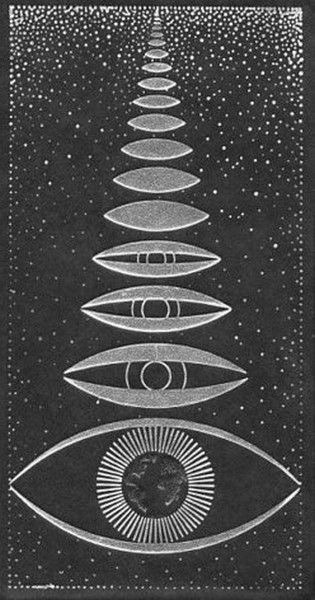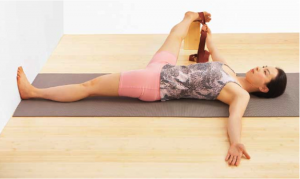‘…our bodies are casted not only by what we do, but by what we don’t do. For example, many of us have “casted” the ciliary muscles of our eyes through exceptionally high amounts of close-looking (computers, smart phones, iPads, books, the walls of our homes, offices and classrooms) and exceptionally low amounts of looking to great distances.’ Katy Bowman. See full article here for further explanation.

Here are a few exercises you might like to try to improve muscle weakness around the eyes and to help eyes strain.

For generations the people of Tibet have used natural methods to correct visual weakness and improve their eyesight. Chief among the methods employed has been the use of certain exercises which have proved useful over long periods of time. The figure on this chart was designed by Tibetan Lama Monks to give the necessary corrective exercises and stimulation to the muscles and nerves of the optical system. The eye Muscles focus similar to a camera shutter. The purpose of these exercises is to strengthen the eye muscles to improve vision. Practice a few minutes morning and evening and see if you notice its effects.
How to Use the Chart
These exercises are to be done without eyeglasses or contacts. Do each movement for 30 seconds while in a sitting position, spine straight and do not move the head side to side. Move only the eyes.
1.) With the palm of each hand cup both closed eyes to relax them.
2.) Move the eyes clockwise around the outer circle of dots
3.) Repeat this movement in a counterclockwise rotation
4.) Move the eyes back and forth between the dots at 2 and 8 o’clock
5.) Repeat this movement back and forth between dots at 4 and 10 o’clock
6.) Blink the eyes briefly and finish therapy with the palming same as exercise #1
Repeat exercises as desired being careful to avoid strain.
Source: http:/
Here’s a couple of exercises from this article in Yoga International:
1. Palming

Rub your hands together for 10 to 15 seconds until they feel warm and energized. Then gently place your hands over your eyes, with the fingertips resting on the forehead, the palms over the eyes, and the heels of the hands resting on the cheeks. Don’t touch the eyeballs directly, but hollow the hands slightly and allow them to form a curtain of darkness in front of the eyes. Close your eyes, breathe deeply, and relax. Envision the eyes absorbing the darkness like a sponge, while also welcoming healing warmth and energy from the hands. Invite the eyes to grow soft and spacious, and enjoy this break from visual stimulation. Continue this palming action as long as it feels soothing—for just a few seconds or up to five minutes. When you are ready to emerge, gently remove the hands from the face and slowly open the eyes.
This palming technique can also be done after the eye exercises that follow to further rest the eyes.
2. Eye Rolling

Sit upright with a long spine and relaxed breath. Soften your gaze by relaxing the muscles in your eyes and face. Without moving your head, direct your gaze up toward the ceiling. Then slowly circle your eyes in a clockwise direction, tracing as large a circle as possible. Gently focus on the objects in your periphery as you do this, and invite the movement to feel smooth and fluid. Repeat three times, then close the eyes and relax. When you’re ready, perform the same eye-rolling movement three times in a counterclockwise direction.
As with all movements in the body, variation is key- try to vary your focus by spending some time looking at the furthest thing you can see in the distance, watch sunsets, sunrises, the horizon. Give your eyes a real break and test your proprioception by practicing a sun salutation with your eyes closed, try a balance with your eyes closed and notice the difference.










